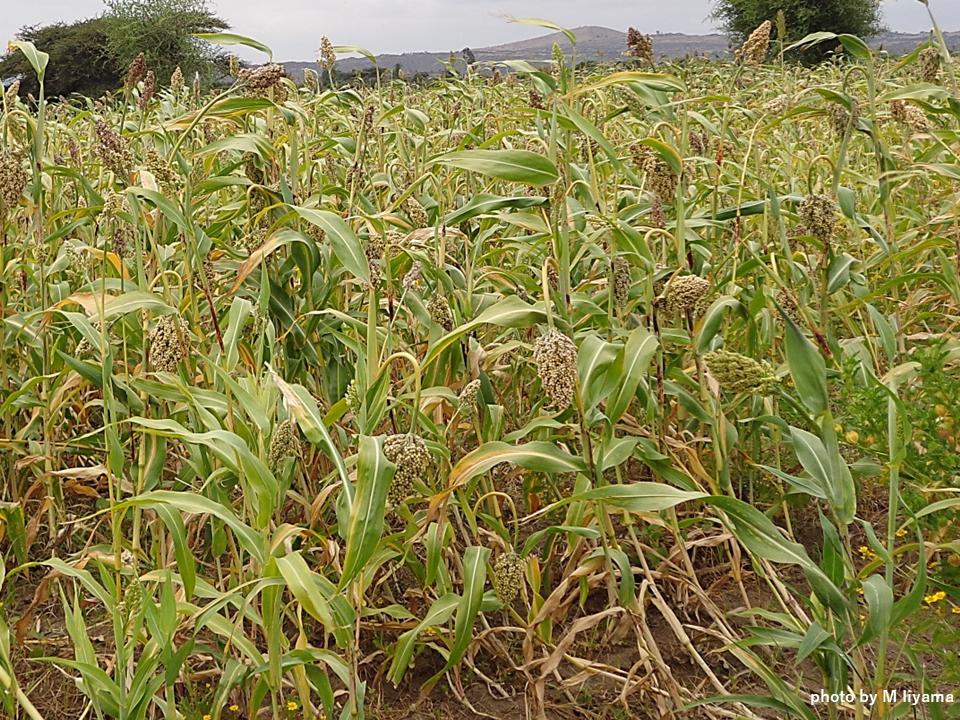Pick Up
694. International Year of Millets 2023

The United Nations has designated 2023 as the International Year of Millets (IYM2023). Millet is a crop that grows better in arid lands and is more tolerant of climatic changes than other cereals. Furthermore, millet is also called "nutri-cereal" due to its high nutritional value, and is attracting attention.
What is millet?
Millet is a general term for members of the grass family including pearl millet, foxtail millet, proso millet which produce small seeds. Millet is also called a "nutri-cereal" because of its high nutritional value. It is rich in vitamins and minerals such as iron and calcium, and contains high amounts of protein, dietary fiber, and resistant starch (indigestible starch), which may help prevent and manage diabetes.
Where is it grown?
Millet is grown mainly in arid regions of Asia and Africa because it can be grown under non-irrigated conditions with less rainfall than cereals such as wheat, rice, and corn, making it a major food resource in poor environments such as arid and semi-arid lands. According to FAO statistics, in 2021, Asia will account for 56% of the world's millet* production, and Africa for 40%, with these two regions accounting for almost all of the production. Looking at production by country, India accounts for 44% of the world's production at 13.21 million tons, followed by China at 2.7 million tons (9%) and Niger at 2.15 million tons (7%). Incidentally, Japan's production was 250 tons.
Millet Production (unit: million tons) From FAOSTAT
India 13.21
China 2.70
Niger 2.15
Nigeria 1.92
Sudan 1.50
Mali 1.49
Senegal 1.04
・
Japan 0.00025
*Statistics are total volume of millets (pearl millet, finger millet, proso/common millet, foxtail millet, barnyard millet, little millet, kodo millet).
International Year of Millets
In March 2021, the 75th United Nations General Assembly declared the year 2023 to be the International Year of Millets (IYM2023) as an opportunity to raise awareness and translate the nutritional and health benefits of millets and their suitability for cultivation in a changing climate into policy.
The United Nations has declared 2016-2025 as the Decade of Action for Nutrition. During that time, it has established the 2016 "International Year of the Legume" and the 2021 "International Year of Fruit and Vegetables" to stimulate action to end hunger and eradicate malnutrition in the world, and to provide access to healthier and more sustainable diets. This year's International Year of Millets will recognize the role of millets in addressing nutritional, agricultural, and climate challenges, raise awareness of their climate tolerance and nutritional benefits, and advocate for a diverse, balanced, and healthy diet through the sustainable production and increased consumption of millets.
JIRCAS has conducted research on sorghum**, one of the major grains along with millet, and has found many chemical substances in sorghum roots, including sorgoleon. These substances suppress the conversion of ammonia to nitrate by soil microorganisms, and this function is called Biological Nitrification Inhibition (BNI). BNI is attracting attention around the world because it reduces groundwater contamination and greenhouse gas emissions due to nitric acid. This BNI research has been extended to other crops, and last year, the nitrification inhibition function was successfully added to wheat. This achievement has been selected as one of the 10 major agricultural technology news in 2021.
** Sorghum is native to Africa and began to be cultivated in Egypt around the 3rd century BC, and is grown extensively in India and Asia. It is called "morokoshi" or "takakibi" in Japan.
Minor grains are also one of the local landscape-derived foods that contribute to improved nutrition and livelihood. On December 12, 2011, JIRCAS in collaboration with the Alliance Bioversity and CIAT organized the the hybrid seminar The application of science and traditional knowledge to foster the utilization of foods obtained from local landscapes for improved nutrition and livelihoods. The video of the seminar is now posted on the JIRCAS YouTube channel. If you missed it, please take a look.
Part1:
Part2:
References
International Year of Millets (IYM 2023)
https://www.fao.org/millets-2023/en
International Year of Millets 2023 - Communication handbook and toolkit
https://www.fao.org/3/cc3253en/cc3253en.pdf
Development of BNI-enhanced Wheat’ Selected in Top 10 Agricultural Technology News for 2021
https://www.jircas.go.jp/en/reports/2021/r20211224
Identification and characterization of biological nitrification inhibition (BNI) substances in sorghum root
https://www.jircas.go.jp/en/publication/research_results/2012_04
Sorgoleone release determines the hydrophobic-BNI capacity in sorghum root systems
https://www.jircas.go.jp/en/publication/research_results/2014_a07
Contributor: KANAMORI Norihito (Information and Public Relations Office)
